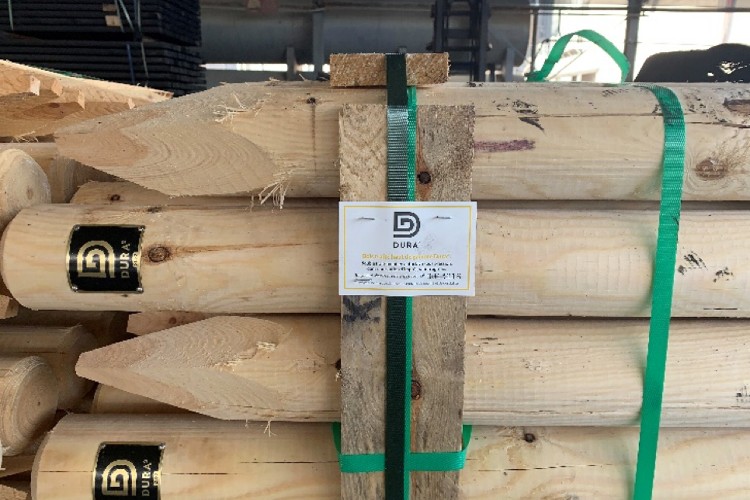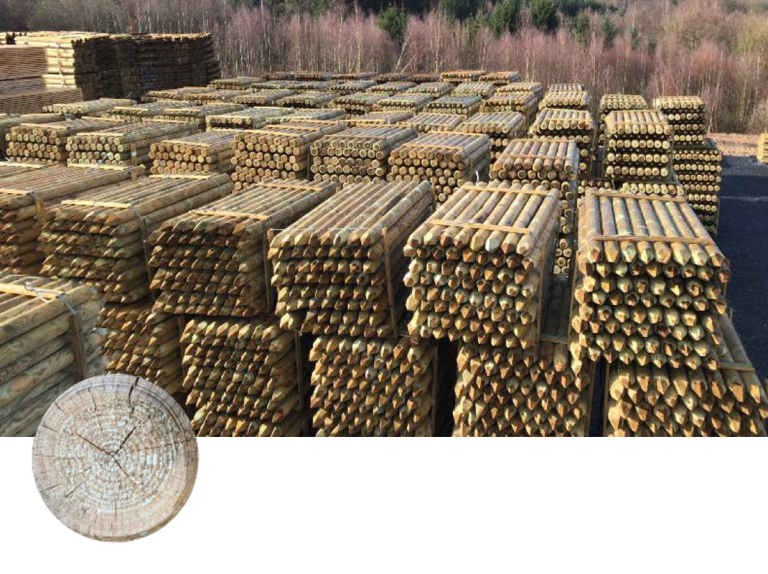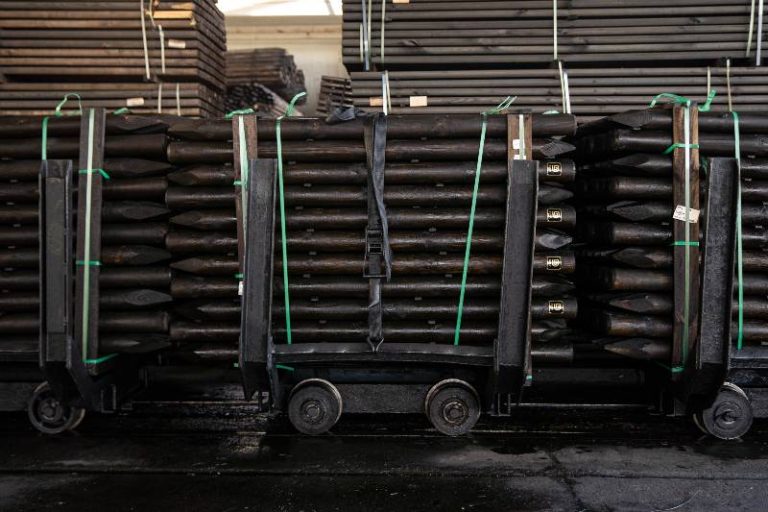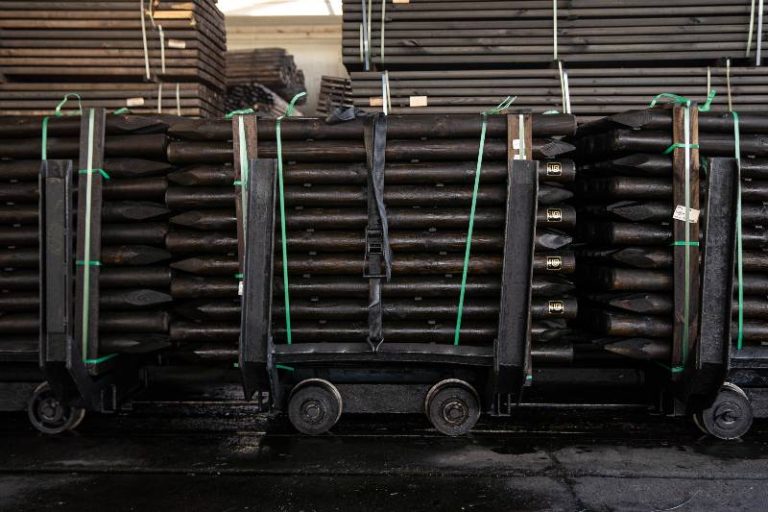
DURA² delivers quality to the power of two through a double impregnation process in a high-pressure vacuum tank, followed by controlled drying.
The dried plain timber is labelled and assigned a unique code, ensuring precise tracking for each customer’s order.
Next, the timber is loaded onto a cart, transported into the tank, and undergoes the first treatment.
Once the tank is sealed, the fully computer-controlled impregnation process begins.
The required dosage of treatment agent is infused into the wood under vacuum and high pressure, tailored to the specific timber type and treatment requirements. This step takes approximately 2 hours. Following the initial treatment, the timber is removed from the tank and placed on an impermeable floor to dry. For standard treatment, this marks the final step of the process.
For DURA², however, the timber is treated to full saturation using the maximum concentration of impregnating agent, ensuring deep and thorough protection. This process takes between 4 and 6 hours.
DURA² timber is dried in open air for at least 6 months, allowing natural cracks to form in the wood.


The timber then undergoes a second treatment using a high-concentration salt solution and a specially developed DURA² colorant. With this second treatment, the sapwood is saturated a second time, enabling deeper penetration of the impregnating agent into the cracks. As a result, your DURA² timber is now optimally protected.
Following the second impregnation, the timber emerges from the tank with a rich chestnut brown colour similar to creosote – but without the distinctive pungent smell (or any of its other disadvantages).
Finally, the quality label ensures a refined finish, serving as both proof of guarantee and a hallmark of this premium timber product.


Timber treated in a high-pressure tank can be compared to a sponge. Similar to how a sponge can be saturated with water, wet timber is also saturated, and nothing can be added to it. Therefore wet timber must first be dried to allow the pores to absorb the treatment agent. After the timber has dried, the air in the pores should be replaced with impregnating agent.
In a sealed high-pressure tank, powerful vacuum pumps extract as much air as possible from the tank and the timber. The stronger the vacuum, the more preservative solution can be absorbed.
While maintaining the vacuum, the tank is completely filled with impregnating agent.
Next, pressure pumps force the impregnating agent deep into the timber under extremely high pressure. Once sufficient fluid has penetrated into the timber, the excess fluid is pumped back out into a storage tank.
A final vacuum is then created to prevent leakage of the impregnating agent as much as possible.
Even though the difference in penetration degree between treatment with salts only versus treatment with salts plus additional colorant is not significant, the more viscous colorant reduces the penetration degree of the salt solution. So to obtain an optimal result, we only add the colorant, which gives the timber its beautiful chestnut brown colour, during the second treatment. Additionally, the brown colour stays more on the surface and will weather to a natural grey colour over time.